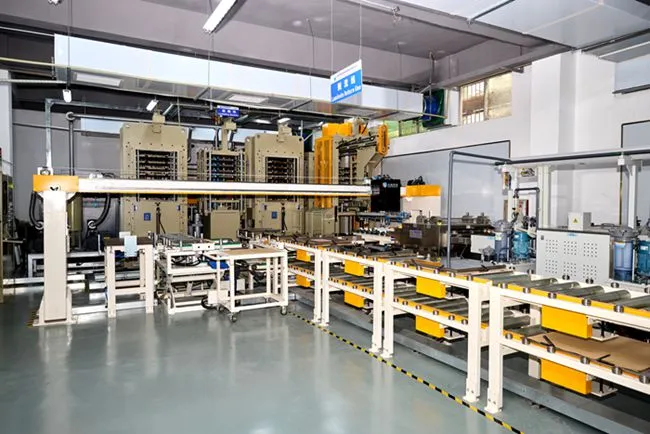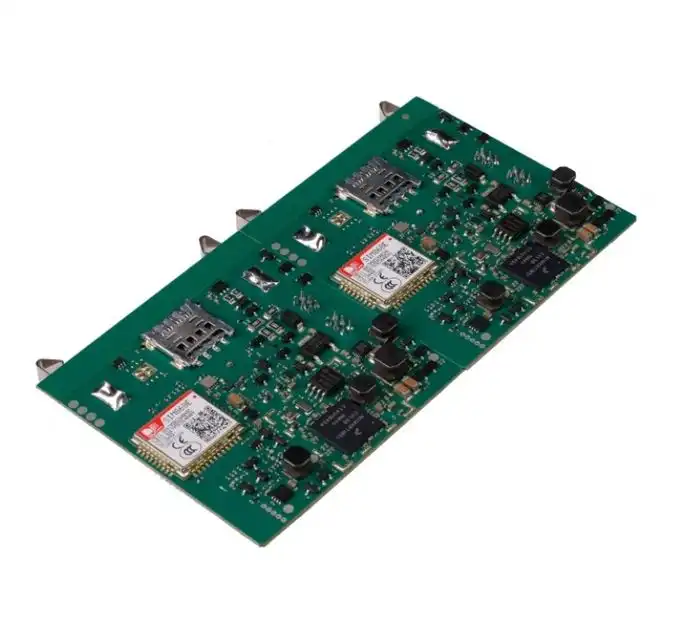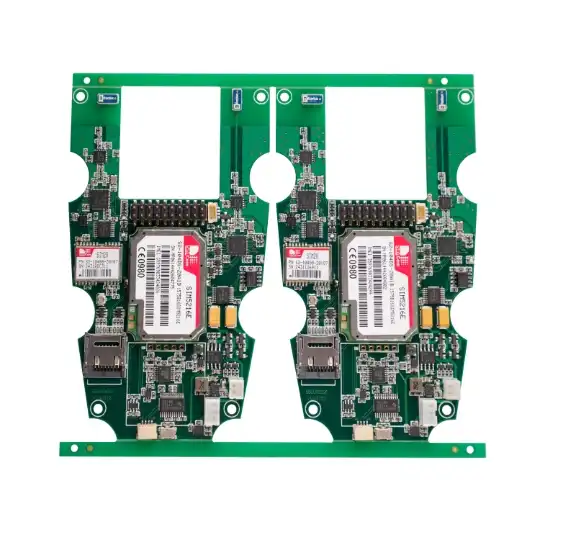How to Balance Cost and Quality in PCB Manufacturing?
Balancing cost and quality in PCB manufacturing require a strategic approach. Manufacturers must optimize material selection, streamline production processes, and leverage advanced technologies without compromising on quality standards. By implementing efficient design practices, utilizing automated quality control systems, and partnering with reliable suppliers, companies can achieve a harmonious balance between cost-effectiveness and superior product quality in their PCB manufacturing endeavors.

Understanding the Cost-Quality Relationship in PCB Manufacturing
In the realm of PCB manufacturing, the interplay between cost and quality is a delicate dance that requires careful choreography. To truly grasp this relationship, it's essential to delve into the factors that influence both aspects of production.
Key Factors Affecting PCB Manufacturing Costs
Several elements contribute to the overall cost of PCB production. Material selection plays a pivotal role, with high-quality substrates and copper foils often commanding premium prices. The complexity of the board design, including the number of layers and special features like blind or buried vias, can significantly impact manufacturing expenses. Production volume is another crucial factor, as economies of scale can lead to reduced per-unit costs for larger orders. Additionally, the choice of manufacturing equipment and technologies can affect both initial investment and ongoing operational costs.
Quality Considerations in PCB Fabrication
Quality in PCB manufacturing is not merely a buzzword but a critical aspect that can make or break the performance and reliability of electronic devices. Ensuring quality involves meticulous attention to detail throughout the production process. This includes maintaining precise tolerances for trace widths and spacing, achieving proper layer alignment, and ensuring consistent plating thickness. The use of high-grade materials and advanced manufacturing techniques, such as laser drilling for microvias, contributes to superior quality but often at a higher cost. Rigorous testing and inspection protocols, while essential for quality assurance, also add to the overall expenses.
The Balancing Act: Cost vs. Quality Trade-offs
Striking the right balance between cost and quality is akin to walking a tightrope. On one hand, cutting corners to reduce costs can lead to subpar products that fail in the field, resulting in costly recalls and damaged reputations. On the other hand, overengineering and using unnecessarily expensive materials can price a product out of the market. The key lies in identifying the critical quality requirements for each specific application and optimizing the manufacturing process to meet those requirements while minimizing unnecessary expenses. This may involve strategic decisions such as selective use of high-end materials only where absolutely necessary or investing in advanced equipment that improves both quality and efficiency in the long run.
Strategies for Optimizing Cost Without Sacrificing Quality
Achieving the perfect equilibrium between cost-effectiveness and high-quality output in PCB manufacturing requires a multifaceted approach. By implementing strategic measures, manufacturers can significantly reduce expenses while maintaining or even enhancing the quality of their products.
Design for Manufacturability (DFM)
Design for Manufacturability is a proactive approach that considers manufacturing constraints and capabilities during the initial design phase. By adhering to DFM principles, engineers can create PCB layouts that are inherently more cost-effective to produce without compromising on quality. This includes optimizing component placement for efficient assembly, minimizing the number of drill holes, and standardizing feature sizes where possible. DFM also involves considering the tolerances of available manufacturing equipment to avoid unnecessarily tight specifications that drive up costs. By collaborating closely with manufacturers early in the design process, companies can identify potential issues and make adjustments before they become costly problems during production.
Material Selection and Management
Judicious selection and management of materials can lead to substantial cost savings without sacrificing quality. This involves carefully evaluating the performance requirements of the PCB and choosing materials that meet those needs without overspecification. For instance, while high-frequency applications may require expensive low-loss materials, standard FR-4 might suffice for less demanding designs. Implementing effective inventory management systems can help reduce waste and ensure that materials are used efficiently. Bulk purchasing of commonly used materials can lead to volume discounts, but this must be balanced against storage costs and the risk of obsolescence. Additionally, working closely with suppliers to develop custom material solutions can sometimes result in both cost savings and improved performance tailored to specific applications.
Leveraging Advanced Manufacturing Technologies
Investing in cutting-edge manufacturing technologies can seem counterintuitive when trying to reduce costs, but it often leads to long-term savings and quality improvements. Advanced automation systems can increase throughput, reduce human error, and improve consistency in PCB production. For example, automated optical inspection (AOI) systems can detect defects more reliably and efficiently than manual inspection, reducing both quality control costs and the likelihood of defective boards reaching customers. Similarly, advanced drilling and routing technologies can improve precision and speed, allowing for tighter tolerances and more complex designs without increasing costs proportionally. By carefully analyzing the return on investment for such technologies, manufacturers can make informed decisions that balance upfront costs against long-term benefits in both quality and efficiency.
Quality Assurance Techniques for Cost-Effective PCB Production
Ensuring high-quality PCBs while maintaining cost-effectiveness requires a comprehensive approach to quality assurance. By implementing robust techniques throughout the manufacturing process, manufacturers can minimize defects, reduce waste, and ultimately deliver superior products without inflating costs.
Implementing Statistical Process Control (SPC)
Statistical Process Control is a powerful tool for maintaining consistent quality in PCB manufacturing. By continuously monitoring key process parameters and analyzing the data, manufacturers can detect trends and variations that could lead to quality issues. This proactive approach allows for timely adjustments to the manufacturing process, preventing defects before they occur. SPC can be applied to various aspects of PCB production, from etching and plating processes to drilling accuracy and solder mask application. By reducing variability and improving process stability, SPC not only enhances quality but also reduces waste and rework, contributing to overall cost reduction.
Advanced Inspection and Testing Methodologies
Investing in advanced inspection and testing technologies can significantly improve defect detection while streamlining the quality assurance process. Automated optical inspection (AOI) systems can rapidly scan PCBs for visual defects with a level of precision and consistency that surpasses manual inspection. X-ray inspection is invaluable for examining hidden features such as internal layers and ball grid array (BGA) connections. For electrical testing, flying probe testers offer flexibility for low-volume or prototype runs, while dedicated bed-of-nails fixtures provide high-speed testing for larger production volumes. By carefully selecting and implementing these technologies based on production needs, manufacturers can achieve comprehensive quality control without excessive cost overhead.
Continuous Improvement and Feedback Loops
Establishing a culture of continuous improvement is crucial for balancing quality and cost in PCB manufacturing. This involves creating feedback loops that connect various stages of the production process, from design to final testing. By analyzing data from manufacturing, inspection, and field performance, companies can identify recurring issues and opportunities for enhancement. Regular reviews of production metrics, combined with input from operators and quality control personnel, can lead to incremental improvements in processes and designs. This iterative approach not only helps in refining quality control measures but also in identifying inefficiencies that drive up costs. Moreover, by involving suppliers and customers in the improvement process, manufacturers can gain valuable insights that lead to both quality enhancements and cost reductions throughout the supply chain.
Conclusion
Balancing cost and quality in PCB manufacturing is an ongoing challenge that requires a holistic approach. By implementing design for manufacturability principles, carefully selecting materials, leveraging advanced technologies, and employing robust quality assurance techniques, manufacturers can achieve significant cost savings without compromising product integrity. The key lies in understanding the specific requirements of each project and tailoring strategies accordingly. Continuous improvement, data-driven decision-making, and effective communication across all stages of production are essential for maintaining this delicate balance. As the PCB industry continues to evolve, those who successfully navigate the cost-quality equation will be best positioned to thrive in an increasingly competitive market.
How to Balance Cost and Quality in PCB Manufacturing? | Ring PCB
At Ring PCB, we understand the critical balance between cost and quality in PCB manufacturing. Our team of over 500 professionals, including R&D experts and skilled technicians, utilizes advanced tools and ISO-certified processes to deliver innovative, cost-effective PCB solutions. With our global support network and 24/7 operations, we offer comprehensive turnkey services from PCB fabrication to assembly. Trust Ring PCB, your professional circuit manufacturing expert, for high-quality, reliable, and affordable PCB manufacturing solutions. Contact us at [email protected] to optimize your next project.
References
1. Johnson, M. (2022). Advanced Techniques in PCB Manufacturing: Balancing Cost and Quality. Journal of Electronic Manufacturing, 15(3), 78-92.
2. Smith, A., & Brown, B. (2021). The Impact of Material Selection on PCB Performance and Cost. International Conference on Electronics Manufacturing, 112-125.
3. Chen, L. (2023). Statistical Process Control in PCB Fabrication: A Cost-Effective Approach to Quality Assurance. Quality Engineering Review, 29(2), 45-59.
4. Thompson, R., & Davis, K. (2022). Design for Manufacturability: Optimizing PCB Production Costs Without Compromising Quality. IEEE Transactions on Electronics Packaging Manufacturing, 41(4), 301-315.
5. Patel, S. (2023). The Role of Advanced Inspection Technologies in Cost-Efficient PCB Quality Control. Journal of Manufacturing Technology Management, 34(1), 67-82.

Welcome to Ring PCB! Share your inquiry, and receive a tailored quotation!

Ring PCB, your trusted partner for PCB & PCBA Full Turnkey Solutions



